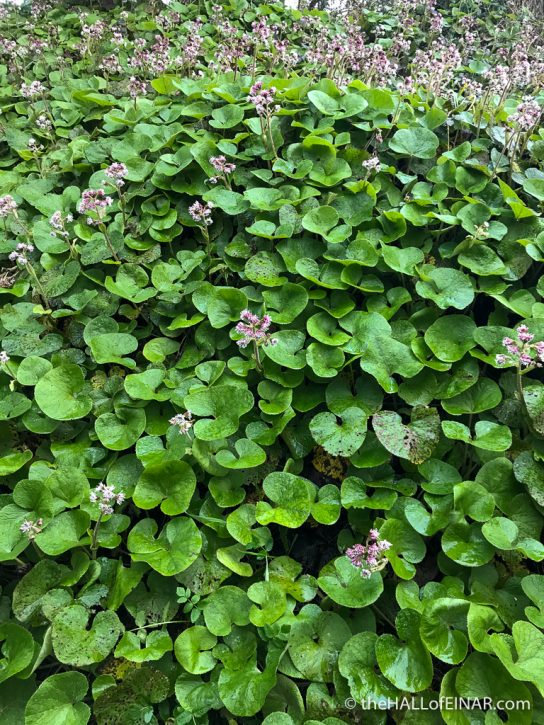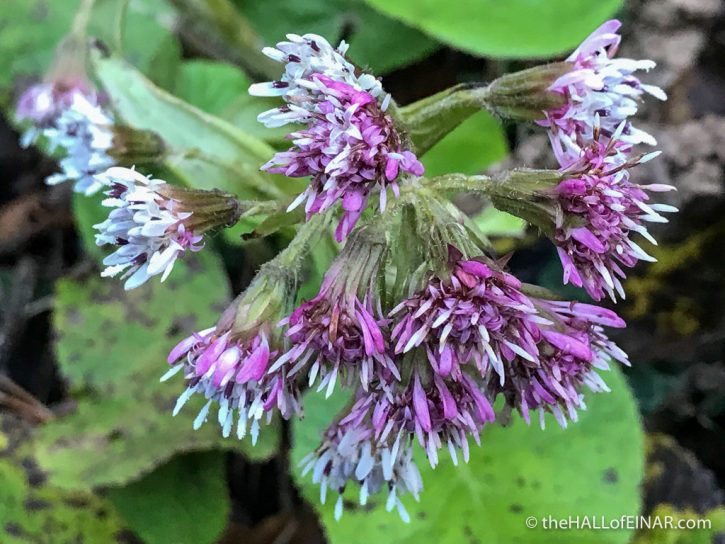Cherry pie, almond or vanilla? What do Winter Heliotropes smell of?
There’s a plant I think I recognise on the industrial estate. It’s Butterbur; except it isn’t. The flowers look right but they’re wrong. The leaves look right but they’re wrong. Here’s my phone photo through the galvanised security fence:

What is it? Back home I look in my Collins Complete Guide to British Wild Flowers. Just to the right of Butterbur is Winter Heliotrope. That’s it. Flowers Dec-Feb. Lovely, isn’t it?
It’s just that it isn’t a British wild flower at all, it’s an introduced species which has naturalised here. It’s an escaped garden plant. I think a tax should be placed on all purchased garden plants to pay for the removal of all escaped garden plants. That’s the principle of ‘the polluter pays’, isn’t it?
It’s a beautiful sight in its creeping carpet, despite it being a plant of Sardinia and North Africa. The books describe the smell of the flowers as being like cherry pie, vanilla or almond. I can only smell mud.
This is a male plant:

Do you want to know how I know? It’s because until recently there were only male plants in the UK. The female plants hadn’t been introduced. They’ve spread across the UK based upon cuttings alone. They have underground rhizomes which allow them to take root and spread. Freakily, the absence of females means they are identical clones.
Why have they been so successful? It’s because we haven’t introduced the complex system of predators and diseases which have evolved over many thousands of years alongside them.
I need to go and check what they smell like to me. I’ll be there, sticking my nose through the security fence when they find me. I need to have an excuse ready for when they show me the CCTV.